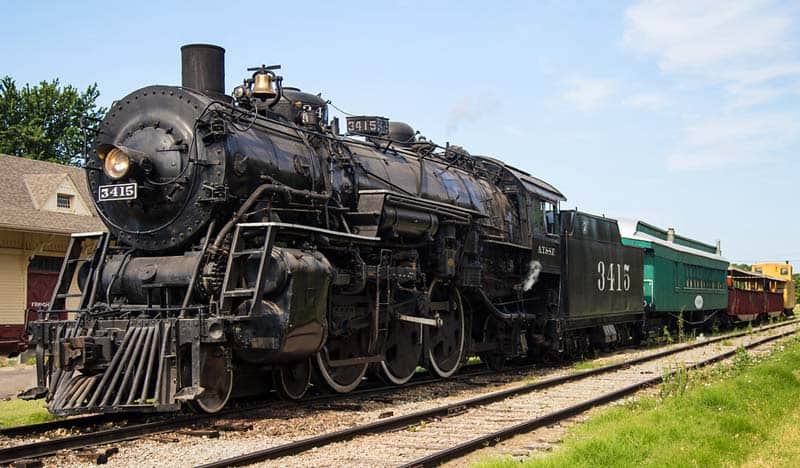4-6-2, Pacific Type
The Pacific type steam locomotive featured one of the most popular wheel arrangements for railroad operators. These locomotives have a wheel arrangement of 4-6-2, meaning she has four pilot (leading) wheels, six-coupled driving wheels, and two trailing wheels. The wheel arrangement is depicted as:
- ooOOOo
Keep reading to learn more about the history of these locomotives, fun facts, and more!

History of the Pacific Type
The Pacific type train model was one of the most popular locomotive models used around the globe. Its large firebox and design allowed for both power and speed. Despite being a worldwide sensation, the nickname can be traced back to the midwestern United States. It was common for locomotive types to be named after the railroad they first operated on. In the case of the 4-6-2, the Missouri Pacific Railroad purchased the first one in 1902, leading to the ‘Pacific’ moniker for the locomotive type.
While early designs of the 4-6-2 date back to the late 1880’s, the first Pacific Type locomotive was the Q-class built by Baldwin Locomotive Works in 1901 for the New Zealand Railways (NZR) Department. The chief engineer of the NZR, Alfred Beattie, ordered the locomotives with a large enough firebox to operate with poor quality coal. Baldwin began incorporating the design for other orders. As word spread of the benefits of the new design, locomotive manufacturers around the world began producing the new type.

Facts About the 4-6-2
There are several models of the 4-6-2 locomotive, the most popular being the 4-6-2A or light. Each driving axel of the 4-6-2A “Light Pacific” weighed 55,000 lbs. Each driving axel of the less frequently used 4-6-2B or “Heavy Pacific” weighed 60,000 lbs.
Other facts about the 4-6-2 Pacific Type are:
- Baldwin Locomotive Works was the first to build the 4-6-2 Pacific Type locomotive. However, ALCO surpassed BLW as the major producer of this train model.
- Nearly 7,000 Pacifics were manufactured for North American railroads between 1902 and 1930.
- Original designs of the 4-6-2 sought to be an upgrade of the 4-4-2 Atlantic Type that also takes inspiration from the 4-6-0 Ten-Wheeler Type.
- The design of the Pacific allowed it to operate at faster speeds than other locomotives. In fact, the world record for steam traction was set by a British Pacific type named the ‘Mallard’. The locomotive has held the record since 1938 with a speed of 126 mph.

Surviving Pacific Type Locomotives
While many Pacific types were lost when diesel engines took over, there are still several of these locomotives that were saved from the scrapper’s torch. In fact, there are several Pacifics that operate on heritage lines throughout the US, including Little River #110, Santa Fe #3415, and The Sugar Express. Museums throughout the country, including the Lake Superior Railroad Museum, have Pacific types on static display.
Our Canadian friends have Pacific type locomotives as well. The Corner Brook Railway Museum in Newfoundland is a train museum that features the preserved CN #593, a popular Pacific type that operated in Canada for nearly four decades.







